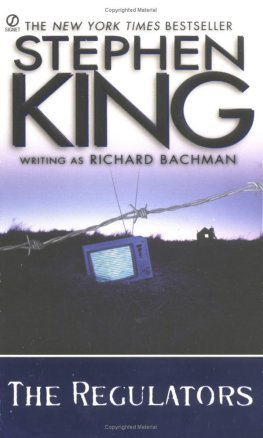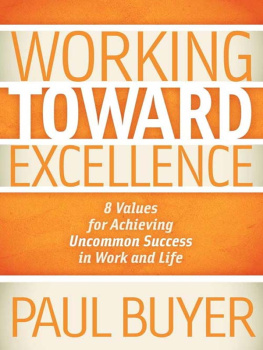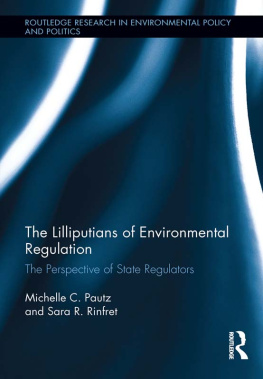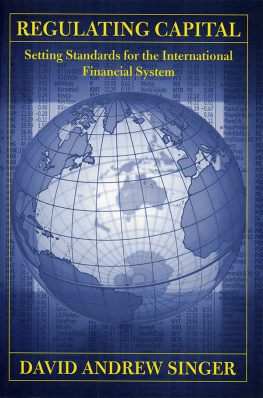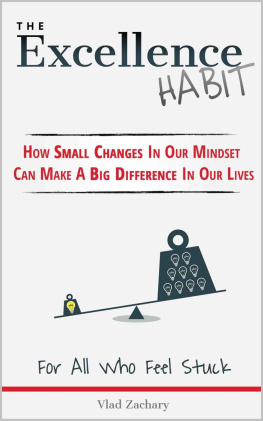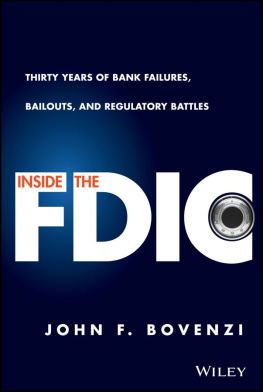ACHIEVING
REGULATORY
EXCELLENCE
CARY COGLIANESE
EDITOR
BROOKINGS INSTITUTION PRESS
Washington, D.C.
Copyright 2017
THE BROOKINGS INSTITUTION
1775 Massachusetts Avenue, N.W., Washington, D.C. 20036
www.brookings.edu
All rights reserved. No part of this publication may be reproduced or transmitted in any form or by any means without permission in writing from the Brookings Institution Press.
The Brookings Institution is a private nonprofit organization devoted to research, education, and publication on important issues of domestic and foreign policy. Its principal purpose is to bring the highest quality independent research and analysis to bear on current and emerging policy problems. Interpretations or conclusions in Brookings publications should be understood to be solely those of the authors.
Library of Congress Cataloging-in-Publication data
Names: Coglianese, Cary, editor.
Title: Achieving regulatory excellence / Cary Coglianese, editor.
Description: Washington, D.C. : Brookings Institution Press, [2017] | Includes index.
Identifiers: LCCN 2016030034 (print) | LCCN 2016042988 (ebook) | ISBN 9780815728429 (cloth : alk. paper) | ISBN 9780815728436 (epub) | ISBN 9780815728443 (pdf)
Subjects: LCSH: Delegated legislation. | Administrative procedure.
Classification: LCC K3178 .A24 2017 (print) | LCC K3178 (ebook) | DDC 348/.025dc23
LC record available at https://lccn.loc.gov/2016030034
9 8 7 6 5 4 3 2 1
Typeset in Baskerville
Composition by Westchester Publishing Services
To Orville G. Cope III
(19322016)
Contents
Jim Ellis
Cary Coglianese
John Braithwaite
Wendy Wagner
Kathryn Harrison
John D. Graham and Paul R. Noe
Ted Gayer
Bridget M. Hutter
Robert Baldwin
Daniel C. Esty
Shelley H. Metzenbaum and Gaurav Vasisht
Adam M. Finkel
Neil Gunningham
David Vogel
David Levi-Faur
Cary Coglianese and Howard Kunreuther
Angus Corbett
Donald P. Moynihan
Cary Coglianese
Foreword
THROUGHOUT MOST OF MY tenure in public service, I had been of the view that the primary role for regulatory activity is to serve a protective function. That is, regulators are to invoke the authority of the state to compel people and businesses to align their behavior with broader public interest considerations and manage societal risk. This conventional idea, that regulators assume a risk management role in society, continues to prevail, and it deservedly plays an important role and holds credence among the general public.
As I embarked on my journey as the CEO and president of one of the largest subnational energy regulatorsthe Alberta Energy Regulator (AER)my team and I realized that regulation has a broader societal purpose. At its core, regulation is a human phenomenon. For this reason, regulators should not confine themselves merely to advancing their statutory objectives. We hold a moral and ethical obligation to initiate bold and courageous action to improve the human condition. John Braithwaite eloquently points out in of this book that excellent regulators incessantly probe for strategic macro-opportunities to create public value, potentially by transforming an entire industry, even an entire economy. In other words, he continues, risk management goes to the basics of regulation; seizing opportunities for transformation goes to the heart of regulatory excellence.
Braithwaites words bear considerable weight at a timely moment in our evolution as an energy regulator in Alberta. As the international community commits to redefining a sustainable energy future in a carbon-constrained world, energy regulators like the AER are primed to play a critical role on this transformational journey. The level of vision, innovation, collaboration, and expertise required to meet such an ambitious goal will require energy regulators to elevate their organizational capabilities to a new level of strategic and operational excellence.
In my interactions with regulatory peers in Canada and abroad, I have observed that most regulators are confronted with similar twenty-first-century challenges that impede transformative change. First, most must navigate through diffuse power structures nested in complex policy systems to advance their strategic objectives. Building networks of trusted relationships with stakeholders, government ministries, and indigenous groups is an essential condition for regulators everywhere to leverage the diverse influence and knowledge required to sustain transformational momentum.
Second, regulators face mounting pressure from the private sector to be more agile and responsive to changes in technological and market conditions, and to simplify cumbersome regulatory procedures that impose unnecessary costs and impede innovation. Regulators have a tendency to respond to this pressure by taking a gradualist approach to reform that focuses on discrete, process-oriented problems that yield incremental changes, rather than pursuing transformative agendas that yield substantive and enduring societal benefits.
Third, regulators must respond to the tragic human and environmental consequences resulting from catastrophic failures. As Cary Coglianese has pointed out in another of his books, Regulatory Breakdown , major accidents and other calamitous events have the tendency to cast grave doubts over entire regulatory systems, leading to public outrage and the erosion of public confidence. In turn, regulators fall prey to the political fallout that typically ensues after such catastrophic events, ultimately reversing the momentum needed for positive transformational change.
Fourth, even in the absence of catastrophic failures, regulators contend with a growing, systemic trend of eroding public satisfaction with governmentand with an increasing skepticism about the regulators ability to avoid capture from corporate interests and to make unbiased decisions that are in the public interest. Citizens have grown increasingly cynical about the role and efficacy of governmental institutions and their ability to influence corporate behavior in positive ways. Furthermore, rapid advancements in social media and access to information expand the arena for emotionally charged policy discourse framed by hardened positions on either side of the ideological divide. Consequently, regulators need to devote a growing share of finite organizational resources to expanding their stakeholder engagement and communication efforts in response to increasing demands for greater democratic legitimacy and inclusiveness. Compounding these challenges is the fact that regulators often operate in some degree of isolation from the political organs of government to maintain their independence and impartial role as arbiters of competing societal interests. This sense of isolation results in a relative paucity of trusted peers that regulators can rely on to offer timely and unbiased advice.
Despite the best intentions of regulators to address these challenges, they persist and continue to confound even the most sophisticated regulatory agencies. Early on in my time at the AER, it became abundantly clear that we needed to place more emphasis on creating an ethos and culture of regulatory excellence that placed regulators in a favorable position to overcome the contemporary challenges of the twenty-first century. We were convinced that the AER needed to embark on this journey with the support and contribution of Albertas stakeholder community and indigenous peoples. A cross-representation of societal values and interests was critical to producing a framework for action that would gain universal credibility and public consent. Furthermore, we recognized the importance of coalescing regulatory practitioners, environmental organizations, academics, and others to create a framework to guide the AER that would be both operationally practical and applicable to a broad suite of regulatory domains.
Next page

